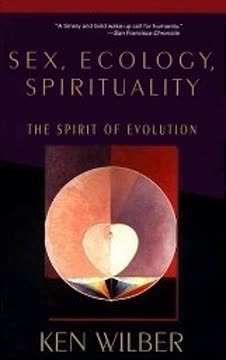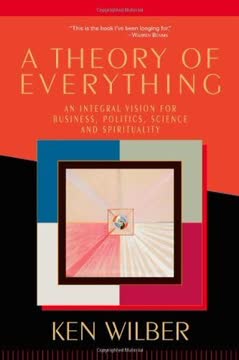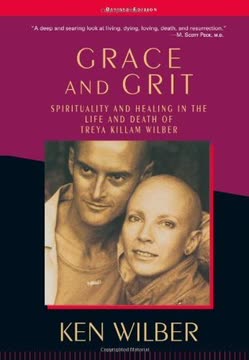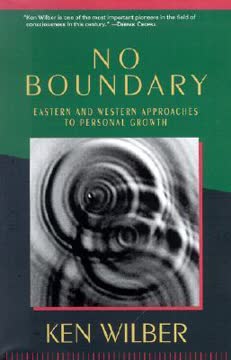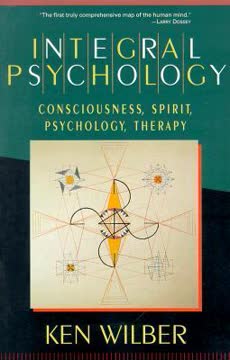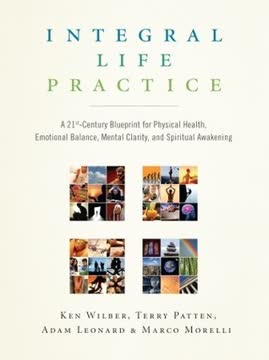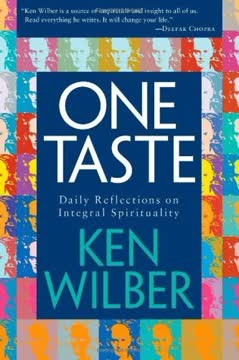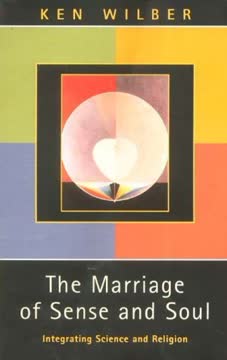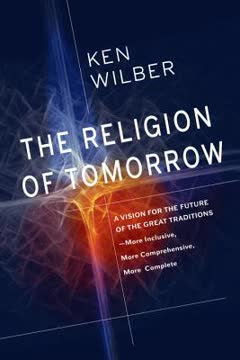Key Takeaways
1. Evolution progresses through holons: wholes that are parts of larger wholes
Reality as a whole is not composed of things or processes, but of holons.
Holons are the building blocks of evolution. They are simultaneously wholes in themselves and parts of larger wholes. This concept applies to all levels of existence, from atoms to cells to organisms to societies. Each holon transcends and includes its predecessors, creating a nested hierarchy of increasing complexity and depth.
Key characteristics of holons include:
- Self-preservation (maintaining their wholeness)
- Self-adaptation (functioning as part of a larger whole)
- Self-transcendence (evolving into new forms)
- Self-dissolution (breaking down when no longer viable)
As evolution progresses, holons display:
- Increasing complexity
- Greater differentiation and integration
- Higher levels of organization
- More relative autonomy
2. The Kosmos includes matter, life, mind, and spirit in an integrative hierarchy
The Kosmos contains the cosmos (or the physiosphere), the bios (or biosphere), nous (the noosphere), and theos (the theosphere or divine domain)—none of them being foundational.
The Kosmos is a holistic concept encompassing all domains of existence. It goes beyond the physical universe (cosmos) to include life, mind, and spirit. This view rejects both materialistic reductionism and idealistic elevationsim, recognizing the validity and interconnectedness of all levels.
The hierarchy of the Kosmos:
- Physiosphere (matter)
- Biosphere (life)
- Noosphere (mind)
- Theosphere (spirit)
Each level transcends and includes the previous ones, forming an integrative hierarchy. This perspective allows for a more comprehensive understanding of reality, acknowledging both scientific and spiritual dimensions without reducing one to the other.
3. Human development mirrors cosmic evolution, from magic to mythic to rational
The world is filled with tendencies and intentions which are [centered on] our own.
Human consciousness evolves through stages that parallel the broader cosmic evolution. This developmental journey begins with magical thinking, progresses through mythic understanding, and eventually reaches rational cognition. Each stage represents a more comprehensive worldview that transcends and includes its predecessors.
Stages of human cognitive development:
- Archaic (undifferentiated awareness)
- Magical (ego-centric, animistic)
- Mythic (ethno-centric, traditional)
- Rational (world-centric, modern)
- Vision-logic (integrative, postmodern)
These stages are not merely intellectual constructs but represent fundamental shifts in how individuals perceive and interact with reality. Understanding this developmental sequence helps explain cultural differences and provides a framework for personal growth.
4. Reason and vision-logic are gateways to transpersonal realms, not endpoints
Reason is a space of possibilities.
Rational thinking opens up new horizons beyond the concrete and mythic worldviews. It allows for abstract thought, hypothetical scenarios, and universal principles. However, reason is not the end of the developmental journey. Vision-logic, which integrates rational analysis with intuitive synthesis, serves as a bridge to transpersonal awareness.
Characteristics of vision-logic:
- Sees multiple perspectives simultaneously
- Integrates seemingly contradictory viewpoints
- Recognizes the limitations of pure rationality
- Opens up to transrational and mystical experiences
Vision-logic paves the way for genuine spiritual development by transcending the limitations of ego-centric and ethno-centric thinking while retaining the valuable insights of rational inquiry.
5. Interior depth correlates with exterior complexity in evolution
The greater the depth of a holon, the greater its degree of consciousness.
Evolutionary development proceeds along both interior and exterior dimensions. As holons become more complex externally, they also develop greater interior depth. This correlation applies across all domains, from physical systems to biological organisms to human societies and individual consciousness.
Examples of interior-exterior correlation:
- Atoms (simple physical structure) - prehension (rudimentary "awareness")
- Cells (complex biochemistry) - irritability (basic responsiveness)
- Animals (neural networks) - sensation and perception
- Humans (neocortex) - self-reflective consciousness
This perspective challenges both materialist reductionism and idealist elevationsim by recognizing the intrinsic relationship between objective complexity and subjective experience.
6. Integration of physiosphere, biosphere, and noosphere is the next evolutionary step
Centauric vision-logic can integrate physiosphere, biosphere, and noosphere in its own compound individuality.
The current evolutionary challenge is to integrate the realms of matter, life, and mind in a coherent and balanced way. This integration is necessary to address global issues such as ecological destruction, social inequality, and existential alienation. Vision-logic, or integral awareness, provides the cognitive capacity to hold these diverse domains in a unified perspective.
Key aspects of integration:
- Recognizing the intrinsic value of each domain
- Understanding their interdependence
- Developing practices that honor all levels
- Creating social structures that reflect holistic awareness
Achieving this integration requires both individual development and collective transformation, leading to a more sustainable and fulfilling way of being in the world.
7. Mystical experiences are valid, intersubjective, and scientifically verifiable
These spiritual endeavors, in other words, are scientific in any meaningful sense of the word, and the systematic presentations of these endeavors follow precisely those of any reconstructive science.
Transpersonal and mystical experiences are not mere subjective fantasies but represent valid modes of knowing reality. They can be studied using rigorous methods similar to those employed in other fields of inquiry. Like mathematics or empirical science, mystical insights are based on direct experience, intersubjective verification, and systematic investigation.
Characteristics of mystical science:
- Employs specific practices (e.g., meditation) to induce altered states
- Develops precise terminology to describe non-ordinary experiences
- Establishes communities of practitioners for peer review
- Refines techniques and understanding over time
Recognizing the scientific validity of mystical experiences opens up new avenues for understanding consciousness, reality, and human potential.
8. Language and direct experience are complementary in conveying spiritual truth
No direct experience can be fully captured in words.
Spiritual truths require both conceptual understanding and direct realization. Language plays a crucial role in transmitting teachings and guiding practice, but it cannot substitute for personal experience. Conversely, mystical experiences need to be interpreted and integrated within a broader conceptual framework to be fully meaningful.
The interplay of language and experience in spirituality:
- Words as pointers to transcendent realities
- Shared terminology facilitating communication among practitioners
- The limits of language in describing non-dual awareness
- The necessity of practice to verify conceptual understanding
This complementary relationship between language and experience highlights the importance of both study and practice in spiritual development, as well as the need for skilled teachers who can bridge the gap between concept and realization.
Last updated:
FAQ
1. What is Sex, Ecology, Spirituality: The Spirit of Evolution by Ken Wilber about?
- Comprehensive integration of knowledge: The book presents a sweeping synthesis of spirituality, ecology, science, and philosophy, aiming to unite ancient wisdom with modern thought in a holistic framework.
- Holons and evolution: Wilber introduces the concept of holons—entities that are both wholes and parts—and explores how these form nested hierarchies (holarchies) throughout the Kosmos, connecting matter, life, mind, and spirit.
- Four-quadrant model: The work maps reality into four quadrants (interior/exterior, individual/collective), showing that every phenomenon has subjective, objective, cultural, and social dimensions.
- Critique of reductionism: The book critiques modernity’s “flatland” worldview, which reduces reality to empirical surfaces and neglects interior depth, leading to ecological and spiritual crises.
2. Why should I read Sex, Ecology, Spirituality by Ken Wilber?
- Groundbreaking integral philosophy: The book offers a unique, integrative vision that transcends fragmented worldviews, providing a map for understanding the complex interrelations of matter, life, mind, and spirit.
- Critical engagement with modernity: Wilber challenges prevailing academic, ecological, and spiritual paradigms, encouraging readers to move beyond reductionism and relativism.
- Practical relevance: By revealing the developmental and structural patterns underlying ecological crises, spirituality, and human nature, the book equips readers with tools for personal and societal transformation.
- Bridges East and West: It synthesizes insights from Eastern spiritual traditions and Western science and philosophy, making it relevant for anyone interested in consciousness, evolution, or holistic thinking.
3. What are the key takeaways from Sex, Ecology, Spirituality by Ken Wilber?
- Holonic structure of reality: All entities are holons—simultaneously wholes and parts—forming nested hierarchies that underpin evolution and development.
- Four quadrants of existence: Every phenomenon can be analyzed through four perspectives: subjective experience, objective behavior, cultural meaning, and social systems.
- Integration over reduction: True understanding and healing require integrating all dimensions of reality, not reducing one to another.
- Spiritual evolution: Human consciousness evolves through stages, culminating in nondual realization, and this process is mirrored in both individual and cultural development.
4. What are the best quotes from Sex, Ecology, Spirituality by Ken Wilber and what do they mean?
- “Everybody is right.” This phrase encapsulates Wilber’s integral approach, suggesting that every perspective holds a partial truth and must be included in a comprehensive understanding.
- “Holons are the basic units of reality.” This highlights the centrality of holons—entities that are both wholes and parts—in Wilber’s model of the Kosmos.
- “The world is illusory; Brahman alone is real; Brahman is the world.” Quoting Ramana Maharshi, Wilber points to the nondual insight that ultimate reality transcends and includes all forms.
- “Protect and promote the greatest depth for the greatest span.” This is Wilber’s Basic Moral Intuition, guiding ethical action by balancing depth (complexity, consciousness) and span (inclusiveness).
5. How does Ken Wilber define and use the concepts of holons and holarchies in Sex, Ecology, Spirituality?
- Holons as whole/parts: Holons are entities that are simultaneously wholes in themselves and parts of larger wholes, such as cells in organisms or individuals in societies.
- Holarchies as nested hierarchies: Holarchies are hierarchies of holons, where each level transcends and includes the previous, forming “nests within nests” fundamental to evolution.
- Healthy vs. pathological hierarchies: Wilber distinguishes between healthy holarchies (which integrate lower levels) and pathological ones (which dominate or repress), arguing that hierarchy is natural and necessary, not inherently oppressive.
- Patterns that connect: Holons exhibit universal patterns—emergence, self-preservation, adaptation, transcendence, and dissolution—across all domains of reality.
6. What is the Four Quadrants model in Sex, Ecology, Spirituality by Ken Wilber and why is it important?
- Four perspectives of reality: The model divides reality into four quadrants: Upper-Left (individual interior/subjective), Upper-Right (individual exterior/objective), Lower-Left (collective interior/cultural), and Lower-Right (collective exterior/social).
- Comprehensive analysis tool: This framework ensures that any phenomenon is understood from subjective, objective, intersubjective, and interobjective perspectives, preventing reductionism.
- Integration of knowledge domains: The quadrants correspond to art (I), morals (we), science (it), and social systems, aligning with major philosophical traditions and validity claims.
- Foundation for integral theory: The model is central to Wilber’s integral philosophy, guiding the integration of science, spirituality, culture, and society.
7. How does Sex, Ecology, Spirituality by Ken Wilber address the ecological crisis and critique modern ecological movements?
- Critique of fractured worldviews: Wilber argues that the ecological crisis stems from a dualistic, mechanistic worldview that separates humans from nature and promotes domination.
- Evaluation of ecophilosophies: He critiques movements like deep ecology and ecofeminism for “flatland” thinking—confusing hierarchy with domination and failing to grasp the holonic complexity of ecological systems.
- Holonic ecology proposal: Wilber advocates for a holonic ecological philosophy that honors the nested, interconnected nature of life, moving beyond simplistic egalitarian or anti-hierarchical models.
- Integration of spirit and nature: He emphasizes that true ecological healing requires integrating spiritual, cultural, and scientific dimensions, not just focusing on external systems.
8. What is the Basic Moral Intuition (BMI) in Sex, Ecology, Spirituality by Ken Wilber and how does it guide ethics?
- Core ethical principle: The BMI is “Protect and promote the greatest depth for the greatest span,” balancing the intrinsic value (depth) of beings with the widest possible community (span).
- Developmental application: The BMI unfolds through stages—egocentric, sociocentric, worldcentric, and transpersonal—each expanding the scope of moral concern.
- Contextual interpretation: While the BMI is universal, its application varies by cultural and developmental context, allowing for legitimate disagreement on complex issues.
- Spiritual foundation: The BMI is not a fixed rule but a spiritual concern, requiring ongoing dialogue and integration of subjective, intersubjective, and objective perspectives.
9. How does Sex, Ecology, Spirituality by Ken Wilber explain the stages of consciousness and spiritual development?
- Developmental stages: Wilber outlines stages from archaic to magic, mythic, rational, and transpersonal (psychic, subtle, causal, nondual), each representing deeper structures of consciousness.
- Parallel in culture and individuals: These stages appear both in cultural evolution (phylogeny) and individual development (ontogeny), showing homologous patterns.
- Transpersonal stages: The psychic stage involves unity with nature, the subtle stage with archetypal forms, the causal stage with formless awareness, and the nondual stage with the unity of emptiness and form.
- Integration and transcendence: Each stage requires integration of previous levels and presents unique challenges and pathologies to be overcome.
10. What is the pre/trans fallacy in Sex, Ecology, Spirituality by Ken Wilber and why is it important for understanding spirituality?
- Definition of the fallacy: The pre/trans fallacy is the confusion between prerational (prepersonal) and transrational (transpersonal) states, since both are nonrational but fundamentally different.
- Two common errors: One error reduces transrational states to prerational regression (as in Freud), while the other elevates prerational states to transrational glory (as in Jung).
- Implications for spiritual development: Recognizing this fallacy is crucial for distinguishing genuine mystical or contemplative states from regressive or immature states.
- Prevents misinterpretation: Avoiding the pre/trans fallacy helps accurately interpret spiritual experiences and avoid conflating infantile or pathological states with authentic spiritual realization.
11. How does Sex, Ecology, Spirituality by Ken Wilber critique the Buddhist no-self (anatman) doctrine and its integration with Western psychology?
- No-self as relative truth: Wilber explains that the Buddhist no-self doctrine is valid on the phenomenal level, where the self is an illusion arising from aggregates, but a cohesive self is pragmatically necessary for healthy functioning.
- Nagarjuna’s nondual critique: The book highlights Nagarjuna’s view that all phenomena, including the self, are empty of inherent existence, and that ultimate reality transcends self/no-self duality.
- Limits of Western adoption: Wilber critiques the misapplication of no-self in Western psychology, noting that denying the self on the phenomenal plane can lead to psychological fragmentation or borderline pathology.
- Need for integration: He calls for a synthesis that honors both the relative reality of self and the absolute nondual ground, avoiding reductionism and supporting healthy spiritual development.
12. What is the perennial philosophy as described in Sex, Ecology, Spirituality by Ken Wilber and how does it relate to nonduality?
- Universal spiritual consensus: The perennial philosophy is a worldview found across cultures, affirming that Spirit exists, is found within, and that most people are unaware due to illusion and duality
Review Summary
Sex, Ecology, Spirituality by Ken Wilber is a comprehensive and ambitious work that attempts to synthesize various fields of knowledge into a unified theory. Readers praise Wilber's intellectual breadth and the book's thought-provoking ideas, particularly his concepts of holons and integral theory. However, many find the book overly long, repetitive, and dense, with some criticizing Wilber's writing style and ego. Despite its flaws, many readers consider it a profound and influential work that challenges conventional thinking and offers a new perspective on spirituality and human development.
Similar Books
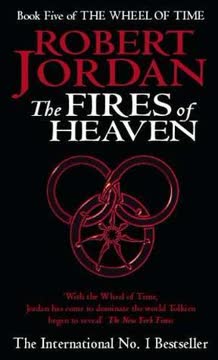
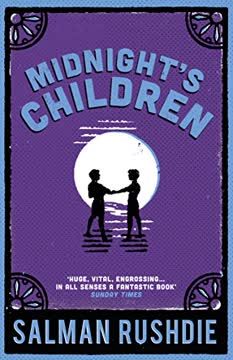

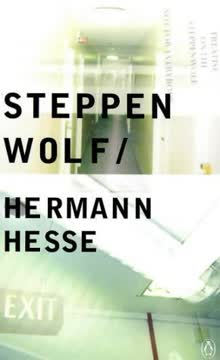
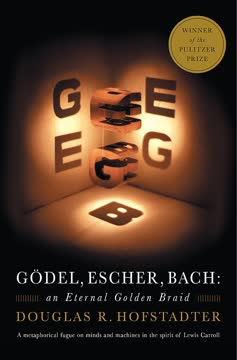
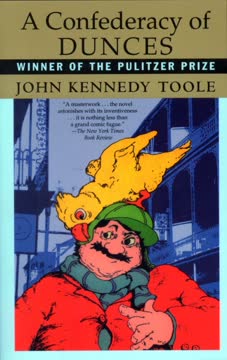
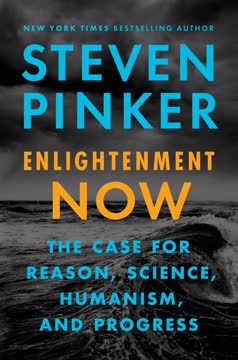
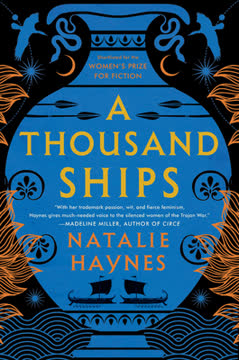
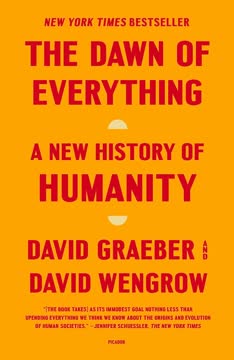
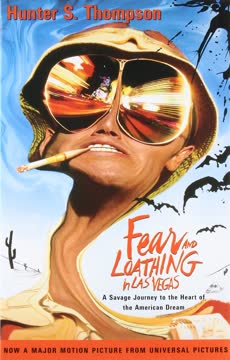
Download PDF
Download EPUB
.epub digital book format is ideal for reading ebooks on phones, tablets, and e-readers.
